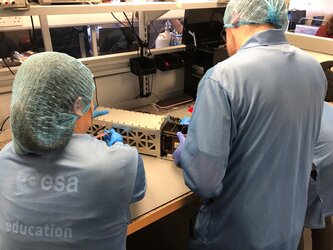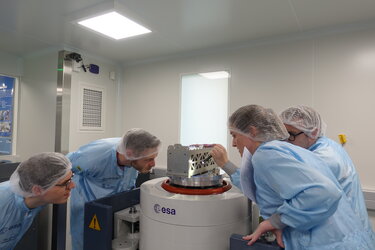How students built Ireland's first satellite
Ireland’s upcoming EIRSAT-1 mission is already achieving its ambition of empowering a new generation of Irish space scientists and engineers.
For nearly six years, dozens of students at University College Dublin (UCD) have worked to design, assemble and test the shoebox-sized CubeSat, as part of an ESA-backed programme.
The mission – which could launch this year – is packed with novel, custom-made technology, including an advanced instrument that will probe the early Universe.
Student-led initiative
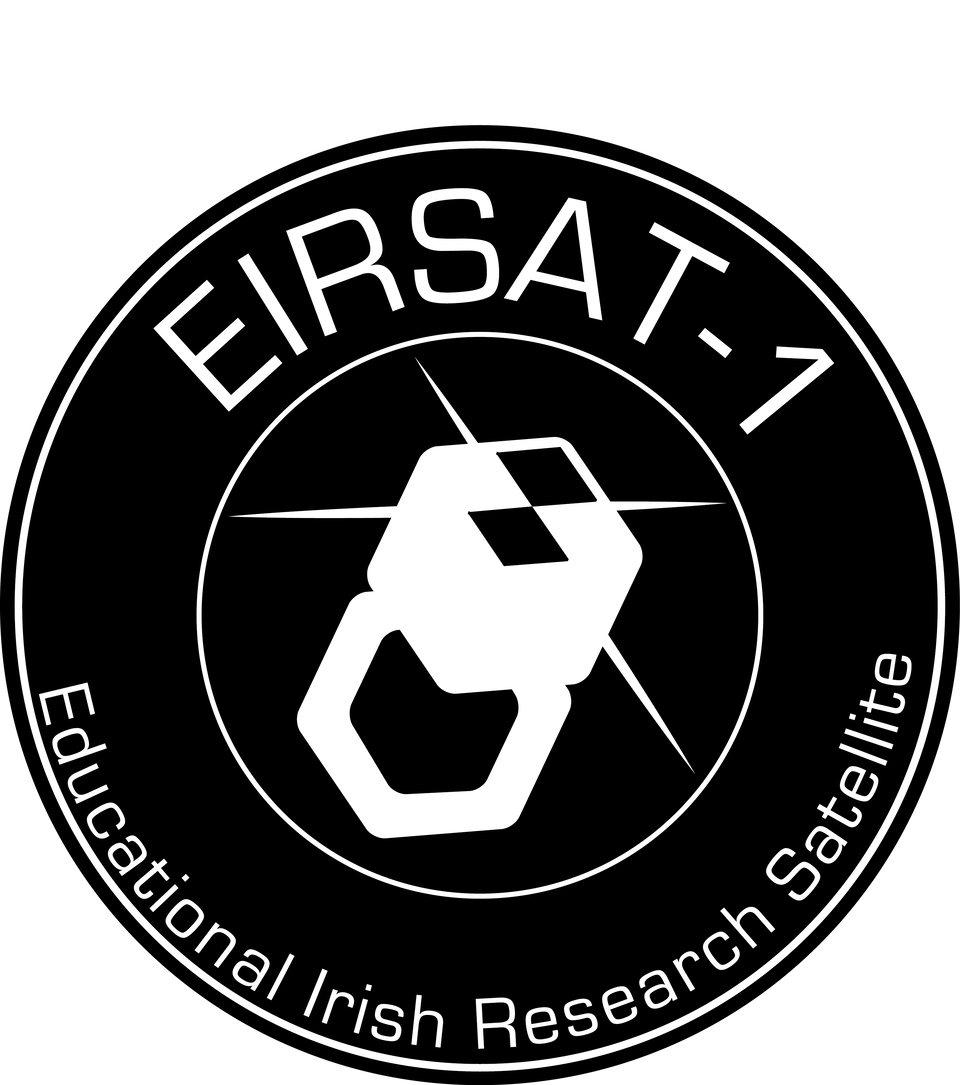
The story of EIRSAT-1 began when educators and students at UCD applied for a place in ESA’s Fly Your Satellite! programme, a hands-on initiative delivered by the agency’s Education Office that supports university teams in the development of their own flight-ready spacecrafts.
As part of the programme, experienced ESA specialists help students navigate the different phases of their projects by applying working methods adopted from the agency’s professional practices.
In March 2017, UCD dispatched a student-led group to ESA’s facility in the Netherlands to pitch the concept of a diminutive two-unit CubeSat, hosting three innovative experiments.
The first is a gamma-ray detector – named GMOD – that will study luminous outbursts from distant galaxies, known to be associated with the explosion or collision of faraway stars. This experiment could help develop a future space gamma-ray telescope designed to peer deep into the Universe.
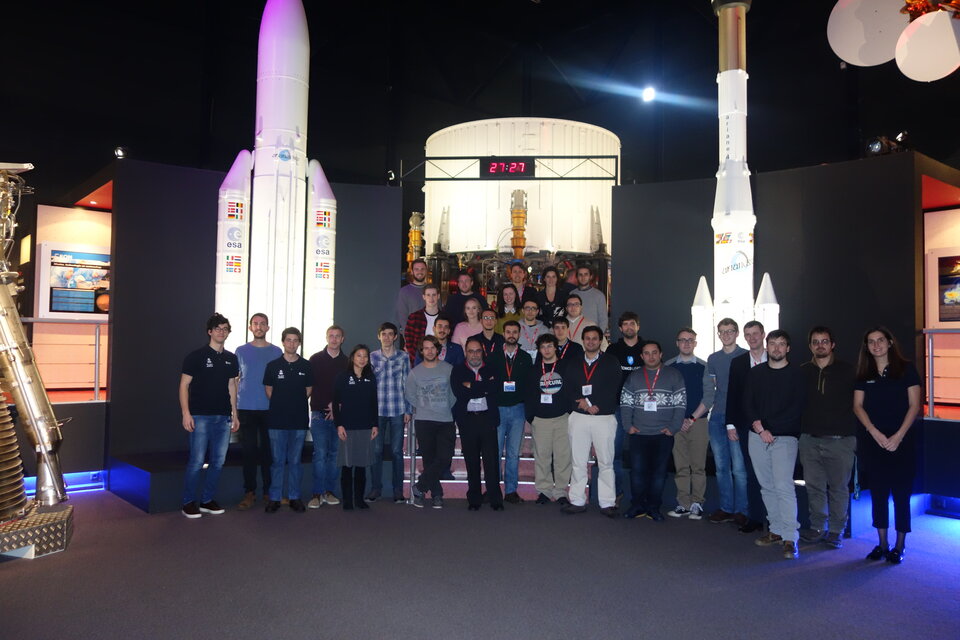
GMOD is joined by a thermal coating study – called EMOD – that will assess the performance of novel surface treatments for future satellite missions and a programming experiment that will test an alternative system for controlling spacecraft orientation.
UCD research scientist and EIRSAT-1 systems engineer David Murphy, who has been a key part of the mission since its inception, said: “UCD has a wealth of experience developing space-tech and using educational CubeSats and, although these were not initially intended to reach orbit, this know-how was vital for our proposal.
“Securing a place in the programme was a hugely exciting moment for all of us at UCD and the wider Irish space industry, marking the beginnings of Ireland’s very first satellite.”
EIRSAT-1 brought together a tight-knit community of dedicated students from different academic disciplines that worked closely with mentors at UCD and ESA to bring the mission to life.

Using the university’s dedicated clean room and other facilities, student-led teams designed and developed key mission hardware, including its payload experiments and its power, communication, and orientation systems.
UCD PhD student and EIRSAT-1 team member Rachel Dunwoody said: “My PhD research is based on GMOD, which hopes to detect gamma rays from some of the most energetic events in the universe. I have had the opportunity to build, test and characterise the detector that will fly in space onboard EIRSAT-1. This has been a huge learning experience for me and all the team at UCD.
“A personal highlight of the past four years has been travelling to ESA's facility in Belgium where we performed vibration and thermal vacuum testing on GMOD, and on the full CubeSat, to prove it can survive both launch and the environment of space.”
Ingenious solutions
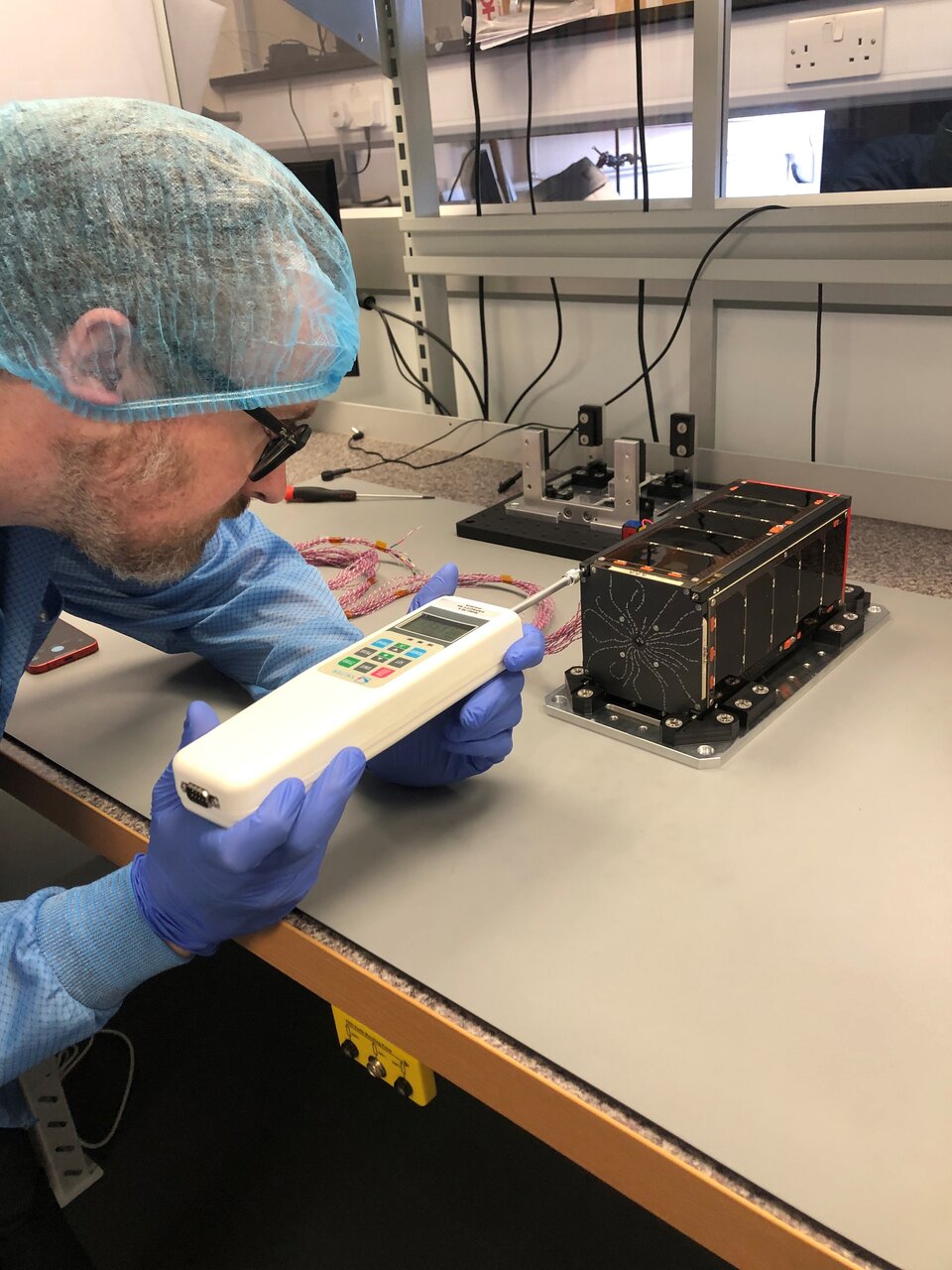
A key challenge that was solved during the design and testing process was the development of EIRSAT-1’s communications system.
To ensure reliable connectivity, the mission requires large antennas which do not fit within a conventional CubeSat dispenser, so the team developed a novel antenna deployment module to extend the coiled communications device 45 minutes after launch.
Former UCD student and EIRSAT-1 Chief Engineer Joe Thompson said: “Developing our own deployable antenna was a great educational experience for the team. Over many iterations, we designed, built and tested a flight ready module, finally testing it onboard the satellite in a space representative environment, a first in Irish space science and engineering education.
“The development of these skills will have an impact beyond those directly participating in the project, including in the expanding space sector in Ireland.”
Students gained important experience in Ireland’s flourishing commercial space industry by collaborating with several Irish space companies during the development of EIRSAT-1.
These companies include Dublin-based EnBio, which developed a specialist surface coating for the Sun-observing Solar Orbiter mission. The EIRSAT-1 EMOD experiment aims to test the suitability of this coating and another EnBio treatment for use in low-Earth orbit.
The flight module

After finalising the design of the individual pieces of hardware, the team put together the test module and assessed its performance to ensure that it adhered to the stringent criteria that all spacecraft must meet.
The final flight-ready module was assembled and integrated last year and is now ready for its mission to low-Earth orbit.
EIRSAT-1 will continue to boost Irish space education after its assembly, with UCD building a dedicated ground station that will enable students to communicate with the CubeSat and gain hands-on experience of mission operations.
As well as enabling more than 40 students to develop skills first-hand and inspiring countless others about science and engineering, EIRSAT-1 has been successful in highlighting the exciting contributions of the Irish space industry to ambitious European and global space programmes, including Solar Orbiter, the James Webb Space Telescope and many more.



